| ||||||||||||||||||
| ||||||||||||||||||
A record breaking 253 meteors are included in this composite of the 2007 Perseid Meteor shower. 2,922 fifteen second exposures at F/1.8, ISO1600, 20mm, MWB3500K with a Canon EOS 5D were taken during two nights, August 11-13th, over fifteen and a half hours. The background is a stack of fifteen four minute exposures at F5.6 ISO800.
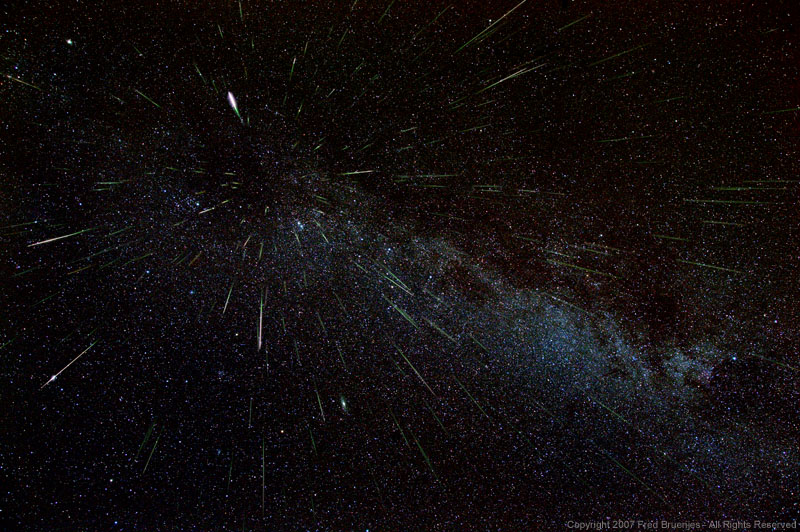
One Perseid left a pronounced smoke trail, which drifted towards the top as it dispersed. A sporadic meteor appears briefly in the lower right.
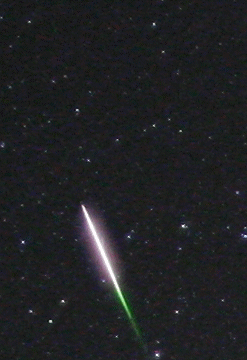
When a meteor dives head on toward the observer, it appears as a point source. This one is clearly a head on Perseid due to its color and location smack dab at the radiant.
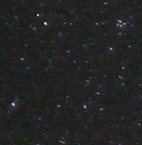
Here's my composite image of the 2005 Perseid meteor shower, taken on the nights of August 11 and 12. For the meteors I took 3,555 exposures over two nights (about ten hours total), each 10 seconds at ISO3200 F1.8 with a Canon 1D Mark II and Sigma 20mm F1.8 lens. The background is a stack of eleven 30 second F3.2 exposures, taken on a later night. There are approximately 160 meteors in the composite. Dozens of sporadic meteors and satellites were purposely left out. As far as I can tell, the greenish color of the fainter meteors is real.
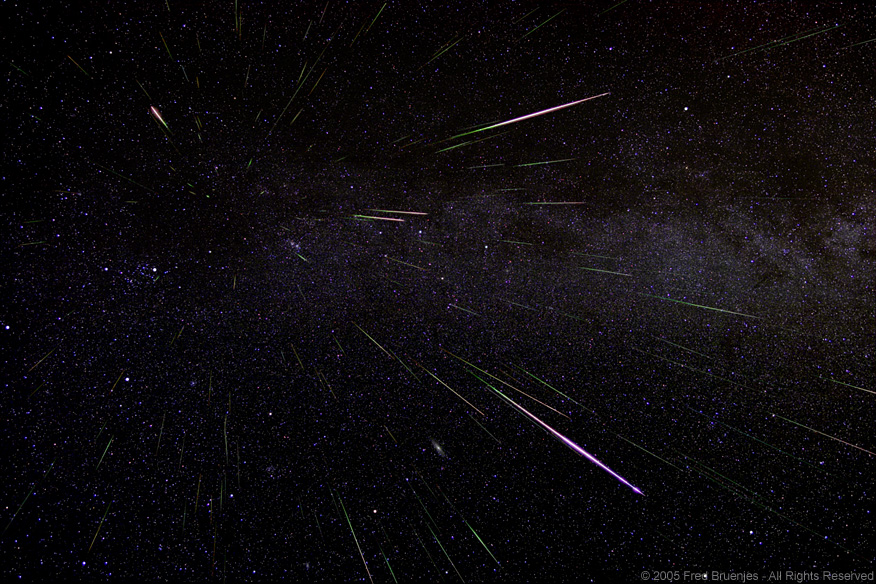
The Geminid meteor shower peaked the night of December 13th, 2004. Sixty-four Geminid meteors are visible in this composite image, in addition to familiar objects like the Milky Way, the Orion Nebula, the Pleiades, and M44. This image used 83 exposures out of 1,265 taken during eleven and a half hours. I had my Canon 1D Mark II running with a 17-40mm F4L lens set at 17mm F4, ISO 3200, MWB 3500K, riding piggyback on an 8" LX200. I stacked ten 30 second exposures for the background, and then used painted masks in Photoshop to insert the 64 x 30s exposures that had meteors. Earlier in the year I used an identical technique for the Perseids (see below).
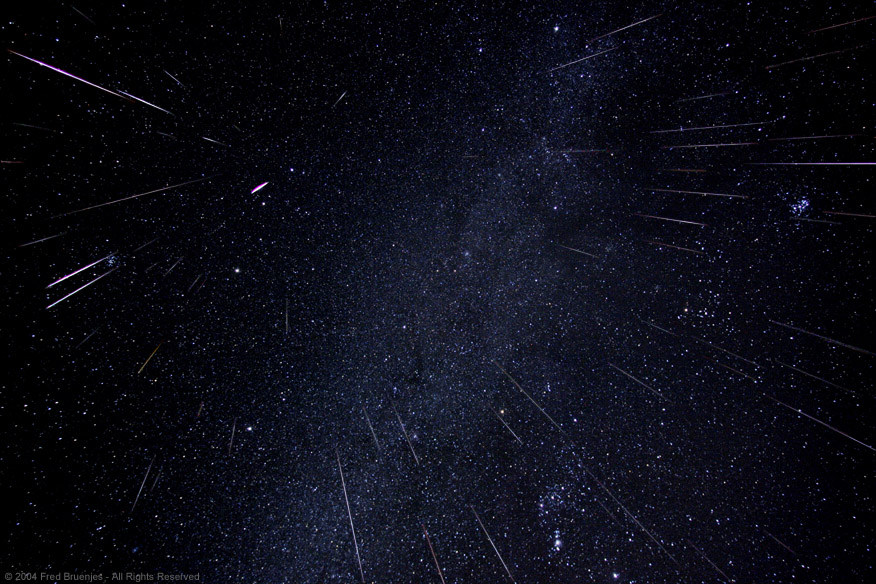
The short bright meteor in the upper left (near the shower radiant) left a persistent train that was visible to my camera for several minutes. Each frame of this animation represents 30 seconds of time. Notice how the train starts at the upper right of the meteor trail and then drifts to the upper left corner. If you can't see it then your monitor isn't properly adjusted. The purple ghost image of the meteor is an artifact of my camera lens.
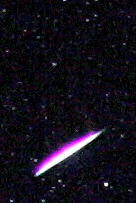
The night of August 11th, 2004 brought a great display of the Perseid meteor shower. This is a composite image, using 59 exposures out of 680 taken during a six hour period. I had my Canon 1D Mark II running with a 17-40mm F4L lens set at 17mm F4, ISO 3200, MWB 3500K, riding piggyback on an 8" LX200. I stacked 9 x 30 second exposures for the background, and then used painted masks in Photoshop to insert the 48 x 30s exposures that had meteors. There are 51 meteors in this image, including one point source (head on) meteor! This image was the Astronomy Picture of the Day on August 20th, 2004, and also appeared on Sky & Telescope's website. It also appears in Robert Reeves' Digital Astrophotography book.
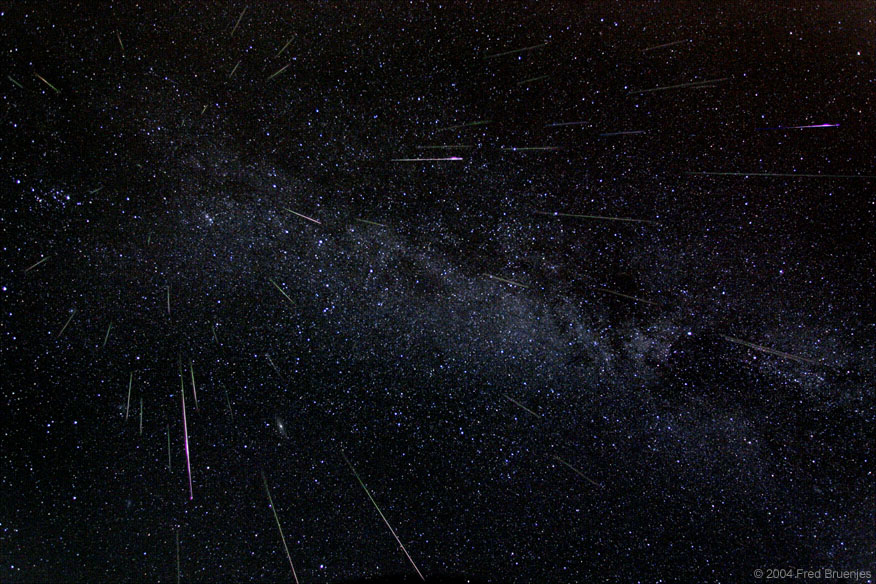
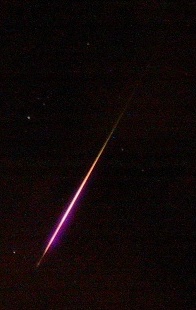
|
The 2001 Leonid meteor shower was pretty disappointing for me, because of a high layer of clouds. Luckily, there were a few holes, and so I kept my cameras pointed at those holes and managed to get a couple pictures of the meteors. These are my best ones. They're fireballs, so called because they were so bright and almost seemed to flame as they streaked through the sky.
|
Why don't you head on to my Spacecraft page now?
Or, you can go back to my main astronomy page for lots more good images!
Comments? Questions? Click here to send email to me, Fred Bruenjes.
All text and images are © 1995-2007 Manfred Bruenjes - All Rights Reserved. Image inlining is strictly prohibited. Email for permission before using an image or text.